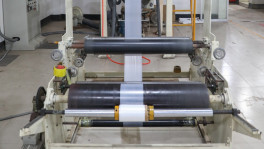A proper cyclone resilient housing for the poor
The recipients of the houses are Brac beneficiaries who graduated from its Ultra-poor Graduation Programme who have at least eight decimal land of their own, and have the ability and willingness to do required maintenance of the building

Minara Begum, 37, has seen several cyclones in her life. Sidr, among them, left an imprint on her mind.
Just as Sidr made a landfall in Bangladesh in November 2007, Minara left for the nearby cyclone shelter, located two kilometres away from her home in Patharghata in the Barguna district.
With a baby on her lap, it was a horrendous journey through the dark rural roads. At a point, she stumbled into a pit created by an uprooted tree that had fallen under the impact of cyclone wind.
Minara took shelter with hundreds of other people. Drenched, they all had to spend hours in wet clothes in the crowded shelter. Her baby got a fever as a result.
As she came back home, she found that little was left of it. The strong wind had destroyed her home. The poultry were all dead, and the total damage was immense.
Yet, Minara was among the lucky ones; none of her family members were lost. On her way back, she found dead bodies of people of all ages. Around 40 to 42 people from the neighbouring South Ruhita village were killed in the cyclone.
"Most people died on their way to the cyclone shelter. The storm surge washed them away, and they got hit and bruised by all sorts of things flying and floating around," recollected Minara. Also among the dead were those who stayed at their unsafe homes, she added.
People often refuse to take shelter during cyclones leaving their homes, cattle, and poultry unattended.
This has been a never-ending story. Minara's home got destroyed last year in cyclone Amphan, too.
Disaster management experts have long been stressing the need for building stronger, climate-resilient houses for vulnerable people in these areas.
Brac, under its Climate Change Programme, has recently built and handed over 30 such houses in three coastal districts. Minara Begum is one of the recipients.
The houses are two-storied, with 652 sq ft floor area on each level. There are two rooms on the top floor with a balcony in the front.
The ground floor, a relatively open space, is mainly for cattle and poultry, but it also houses the only toilet, and a 1,000-litre water tank. The tank gets filled with rainwater that is harvested through the roof of the house.
These houses are built for one family; but during cyclones, 35 to 40 people - relatives and neighbours - can take shelter in them.
In fact, according to the deal signed between Brac and the beneficiaries, the house owner is required to allow people to take shelter during disasters, Brac officials said.
Such climate-resilient houses can help overcome many challenges associated with cyclone shelters, finance included.

Brac built each of its cyclone resilient homes, also called mini shelters, at Tk6 lakh 50 thousand. On the other hand, under the Multipurpose Cyclone Shelter Construction Project (second phase), the government built 220 shelters from 2016 to 2019, each costing TK2 crore 10 lakh.
Each of these cyclone shelters can accommodate 800 people. With this money, 32 of Brac-styled houses can be built, where 1200 to 1300 people can stay during the cyclone, depending on the space allocated per head.
The houses are said to withstand 250 kmph (kilometre per hour) cyclonic wind, and the height of the ground floor is above the usual tidal surge level.
For obvious reasons, these houses provide safety, security and comfort to the recipient families even in regular times.
Half a kilometre away from Minara's house in East Haritana village in Patharghata, lives Ayesha Begum, a single mother of two teenage girls. She has also received a mini shelter.
"Now that we have a pucca building, I am now less worried about my daughters' security. My worries about future cyclones or other natural calamities have also reduced," Ayesha told The Business Standard.
Ayesha, who earns a living from day labour and various other works, said she previously asked the local public representative for a strong house but to no avail. After getting the house from Brac, she is now committed to giving shelter to neighbours during disasters.
Around two crore people living in 15 coastal districts are vulnerable to cyclones and tidal surges. Some tens of cyclone-resilient houses built by different NGOs and government agencies are nowhere near the actual need. The project officials are aware of this.
"We have created this model, where people are not detached from their livelihood options, and they won't have to worry about a lot of things they usually do while staying in a shelter. Other donors and government agencies can replicate this model and build more houses like these. Also, Brac has a microfinance programme; and if this model gets popular, we can provide loans for the construction of more such houses," Dr Md Liakath Ali, the director of Climate Change Programme at Brac, told The Business Standard.
The recipients of the houses are Brac beneficiaries who graduated from its Ultra-poor Graduation Programme, who have at least eight decimal land of their own, and have the ability and willingness to do required maintenance of the building. Especially the families, where women are the primary earners, get priority in the project.
The Foreign, Commonwealth & Development Office (FCDO) of the UK government financed this project.


 Keep updated, follow The Business Standard's Google news channel
Keep updated, follow The Business Standard's Google news channel
















